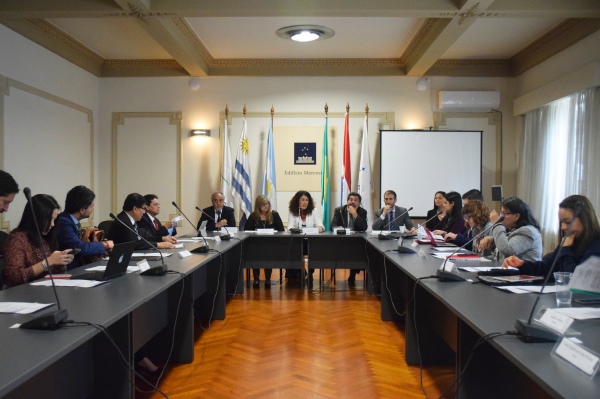«Mercosur: Diversifying Partnerships» – Andrés Serbin
Les compartimos la última columna publicada por Andrés Serbin en inglés sobre Eurasia y America Latina.

A seminar at the 53rd Mercosur Summit. / Sabrina Pizzinato / UCIM / Creative Commons
Mercosur’s signing of a memorandum to increase economic and commercial cooperation with the Eurasian Economic Commission (EAEU) signals the trading bloc’s interest in diversifying its trade and political relationships beyond the western hemisphere. The presidents of the Mercosur countries – Brazil, Argentina, Uruguay, and Paraguay –signed the agreement at the 53rd Mercosur Summit, held last month in Montevideo. At a ceremony at which he accepted the rotating presidency from Uruguay, Argentine President Mauricio Macri emphasized the need for Mercosur to open not just to the Pacific Alliance, but also to Central America, Asia, and Africa.
- Proposals for closer cooperation with the EAEU have been under study for many years, since Russia first created the Commonwealth of Independent States (CIS) from among the former Soviet republics (except the Baltic countries) after the end of the Soviet Union in 1991. The CIS was intended as a post-Soviet space under Russia’s leadership that would reconnect its members within a “Eurasian” geopolitical region distinct from both Europe and Asia. The EAEU, formalized in 2015 under the leadership of Russia and Kazakhstan, now also includes Belarus, Kyrgyzstan, and Armenia. Mercosur ministers agreed to sign the memorandum during meetings immediately before the summit, stating that enhanced cooperation and coordination with the EAEU – with which Mercosur would account for a combined 6.5 percent of world GDP – was consistent with efforts to strike a similar arrangement with the European Union.
- Mercosur’s decision comes amid international tensions over trade and protectionism, but it cannot be divorced from the ideological, cultural, and geopolitical elements of the vision for “Great Eurasia” of which Russian President Vladimir Putin has spoken (and which Chinese President Xi Jinping has shared). The tensions between Russia and Ukraine, and Western pressures in retaliation, were a key driver of Moscow’s push for formalization of the EAEU as a potential interlocutor with the European Union while at the same time putting a brake on U.S. presence in the region. Western analysts have debated the power of “neo-Eurasian” identity as a tool of geopolitical projection beyond the creation of a new economic bloc. China is also a factor in Russia’s calculations. The “Shanghai Cooperation Organization” (OCS) fostered by both countries and Beijing’s “New Silk Road” project, through Central Asia and to the EU, have also increased the salience of “Great Eurasia.” Russia and China have increased cooperation in trade, in technology (including military) and against terrorism and extremism. Through the EAEU and OCS mechanisms, they have extended contacts all the way to India and Pakistan and, potentially in the future, Iran and other countries.
Mercosur’s trade with the EAEU is asymmetrical in favor of the Latin American countries, with the exception of Brazil (with which it is more balanced), according to EAEU officials. The EAEU has high internal tariffs and limited internal trade – except in bilateral trade between Russia and Belarus – but there are already tariff exemptions for Mercosur members. Food appears to be the biggest Mercosur export to the region. Experts believe that trade between the two blocs can be significantly increased, and that a free trade agreement can be signed before the completion of the EU-Mercosur FTA, which has been under negotiation for 20 years.
Although many Western analysts remain doubtful about the success of efforts to form a “Great Eurasia,” Mercosur apparently has determined that engagement with it is low-cost and potentially beneficial. Beyond the possibility of expanded trade, the memorandum of cooperation signed in Montevideo suggests Mercosur sees a geostrategic interest in signaling openness to such collaboration. The right-leaning governments of Latin America and the Caribbean are likely to remain generally aligned with the United States, but they have learned the importance of trade diversification over the past two decades. Setting tradition and ideology aside, most are trying to interact with whomever can bring good deals to their countries in terms of trade, investment, and cooperation. In the context of Russia and China’s interest in a “Great Eurasia,” Mercosur’s increased outreach to EAEU also reflects an important piece in a strategy to undertake the necessary diversification of its foreign policy in a changing world.
- The United States may not appreciate the wisdom of Mercosur’s approach. Eurasia is a blind spot for Washington, which focuses on Russia’s actions in Europe and China’s in Asia – but not in Central Asia itself or as a bridge to India, Pakistan, Iran, Turkey, and the Arab world.
